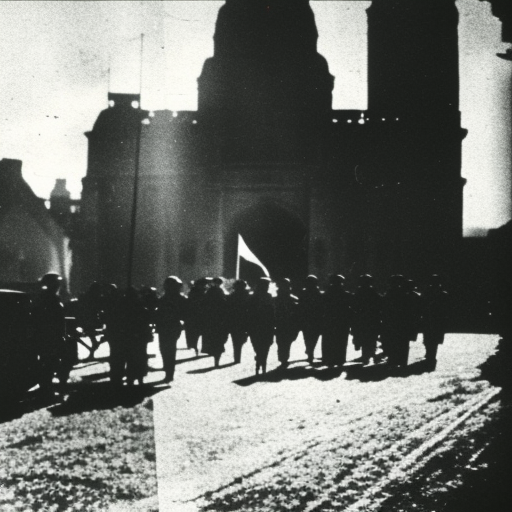Summary:
The European theatre of World War I was a major conflict that took place between 1914 and 1918. It involved many European nations and resulted in significant loss of life and destruction. The war was fought primarily on the Western Front, where trench warfare became a defining characteristic. The conflict ended with the signing of the Treaty of Versailles, which imposed harsh conditions on Germany and set the stage for future conflicts.
Background:
The war began in 1914 when Austria-Hungary declared war on Serbia following the assassination of Archduke Franz Ferdinand. This led to a series of alliances being activated, with countries such as Germany and Russia joining the conflict. The war quickly escalated, and soon most of Europe was embroiled in the fighting.
Trench Warfare:
One of the defining features of the European theatre of World War I was the extensive use of trench warfare. Trenches were dug along the Western Front, stretching from the North Sea to the Swiss border. Soldiers lived in these trenches for extended periods, enduring harsh conditions and constant danger. The front lines remained relatively static for much of the war, with both sides launching unsuccessful offensives to break the stalemate.
Major Battles:
Several major battles took place during the war, each with significant casualties and strategic implications. The Battle of the Somme, fought in 1916, resulted in over one million casualties and ended in a stalemate. The Battle of Verdun, also in 1916, was one of the longest and bloodiest battles in history. Both battles highlighted the brutality and futility of trench warfare.
Technological Advancements:
World War I saw the introduction of new technologies that revolutionized warfare. Machine guns, artillery, and poison gas were used extensively, causing massive casualties. Tanks were also introduced, although they were still in their early stages of development and had limited impact on the outcome of the war. The use of aircraft for reconnaissance and bombing missions also increased during this time.
End of the War:
By 1918, the war had taken a heavy toll on all sides. Germany, facing economic and military collapse, sought an armistice. The fighting ceased on November 11, 1918, and negotiations for peace began. The Treaty of Versailles, signed in 1919, placed full blame for the war on Germany and its allies, imposing heavy reparations and territorial losses. This created a sense of bitterness and resentment in Germany, setting the stage for future conflicts.
Impact:
The European theatre of World War I had a profound impact on the world. The war resulted in the loss of millions of lives and caused widespread destruction. It shattered empires, redrew national boundaries, and led to the collapse of monarchies. The harsh conditions imposed on Germany by the Treaty of Versailles contributed to the rise of Adolf Hitler and the outbreak of World War II.
In conclusion, the European theatre of World War I was a devastating conflict that engulfed much of Europe between 1914 and 1918. Trench warfare, major battles, and technological advancements characterized the war. The signing of the Treaty of Versailles marked the end of the conflict but set the stage for future conflicts. The war’s impact was far-reaching, shaping the course of history for decades to come.












